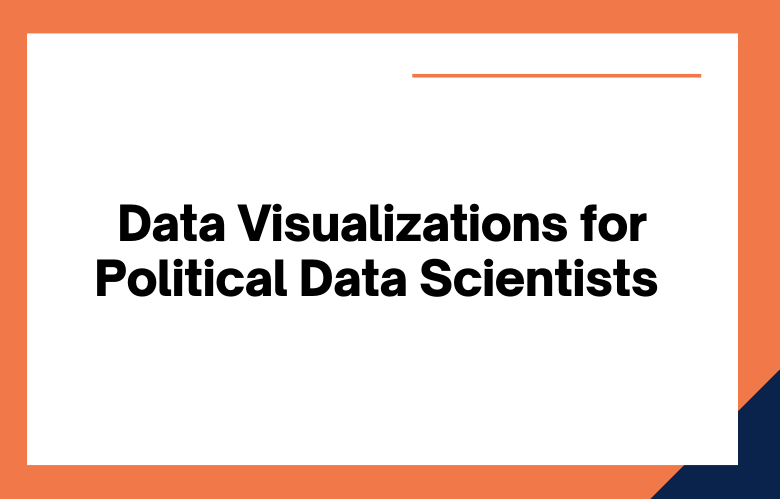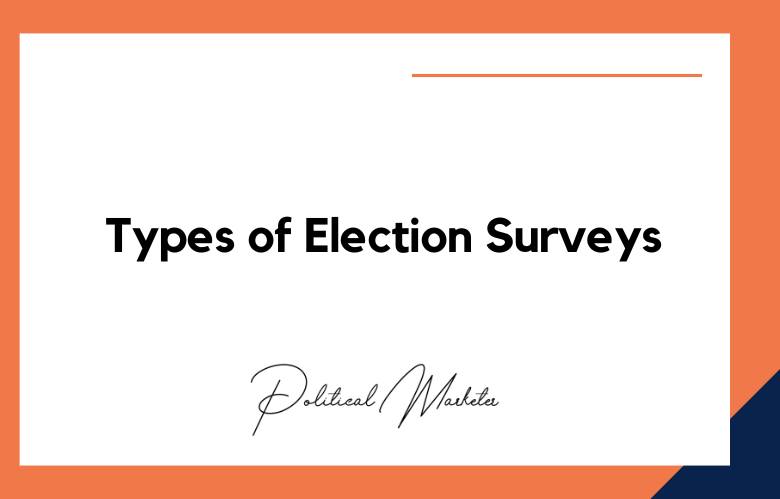As a political data scientist, you’re likely familiar with bar and line graphs. However, many other data visualizations can help explore and understand your data. We’ll introduce five advanced data visualizations and show you how to create them using R. So, whether you’re preparing for the next election or working on a research project, these visualizations help you get more insights from the data.
If you’re a political data scientist, you know data visualization is critical to understanding your data. And while there are many basic visualizations that all political data scientists should know, some more advanced ones can help you get even more insights from your data.
We’ll discuss five advanced data visualizations that all political data scientists should know.
1. Cohort Chart for Political Data Visualization
The cohort chart for political data visualization is a powerful tool for understanding the behavior of voters.
By tracking the voting patterns of different groups of people, we can better understand how they respond to various issues and campaigns.
This information can help us target our messaging more effectively and decide how to run our campaigns.
The cohort chart for Political Data Visualization is a great way to engage your audience.
This tool can create exciting and meaningful visualizations to help your audience understand the data.
It is an essential tool for any political data analyst.
Looking at this cohort chart, it’s evident that there is a strong relationship between political attitudes and visualization preference.
Those who prefer visualizations toward the left are more likely to have progressive political ideologies. In contrast, those who favor right-leaning visualizations are more likely to have conservative ideologies.
The cohort chart for political data visualization is a powerful tool for understanding the complexities of the political landscape. By tracking the voting patterns of different groups of people, we can see how opinion shifts over time and identify which issues are most important to other constituencies. This information is essential for making informed decisions about engaged political participation.
Cohort charts are a great way to visualize political data. By breaking the data into cohorts, you can better understand the trends and patterns.
The cohort chart for political data visualization is a tool for understanding voting patterns. This chart can track changes in voting patterns over time and compare different voters’ cohorts.
2. Correlation Matrix for Political Data Visualization
Data visualization is a critical tool for understanding complex political systems. A correlation matrix is valuable for visualizing relationships between different political entities. By understanding the patterns and correlations between political data sets, we can gain a deeper understanding of the inner workings of our democracy.
It’s no secret that data visualization and politics go hand-in-hand. A great way to gain insights is to create a correlation matrix.
- Correlation matrices are a vital tool for visualizing political data.
- Without correlation matrices, making sense of the multitude of data points available on any political issue would be nearly impossible.
- The correlation matrix lets us see relationships and patterns hiding in disorganized data noise.
- In short, a correlation matrix is invaluable for anyone interested in understanding the complex world of politics.
A correlation matrix is a tool for visualizing political data. It allows us to see relationships between various factors and identify possible areas of Interesting.
A correlation matrix is a fundamental tool for political data visualization. Understanding the relationships between variables allows us to develop more accurate models and visualizations of complex phenomena. The correlation matrix can help us learn about the interactions between political actors, ic issues, and data sets.
A correlation matrix is a potent tool for visualizing political data. It allows you to see relationships between data points that may not be immediately obvious. This tool lets you understand the data and make more informed decisions.
3. Distplots for Political Data Visualization
The shifting tides of political opinion can be challenging to visualize. But with the right tools, it’s easy to see how public opinion changes over time.
One of the ways to visualize data is with a distplot. This type of plot shows the distribution of data points. It’s a great way to see how many people are shifting their opinion on a particular issue.
With a distplot, it’s easy to see how public opinion changes on various issues. This type of plot is a valuable tool for understanding the nation’s mood.
A distplot is a statistical plot used to visualize data distributions.
When visualizing political data, distplots show the distribution of voting patterns, campaign contributions, or anything else that can be quantified.
Distplots are helpful for anyone trying to understand and analyze large data sets.
A distribution plot is a powerful tool for political data visualization. It allows you to see the distribution of data points and compare different distributions. It is quick to spot patterns and trends in the data.
The distplot is a tool that helps political data visualization, shows the data distributions, and helps spot patterns and trends. The distplot can visualize data from polls, surveys, and elections.
There’s no denying that political data visualization is complicated. By using the right tools, anyone can create beautiful and informative visualizations. The primary key is to find the right balance between form and function.
At its core, data visualization is about communication. And when it comes to politics, there’s a lot to communicate. That’s why finding the right balance between form and function is essential. With the right approach, anyone can create stunning visualizations that convey complicated information in an accessible way.
Analyzing political data can be tricky, but it can be a breeze with the right tools. Enter dirt plots.
Distplots offer a quick and easy way to visualize data, making them ideal for political analysis.
With distplots, you can quickly see patterns and trends in your data, better understanding the complex political landscape.
The distplot is a powerful visualization tool for exploring political data. It can help you quickly identify patterns and relationships in complex datasets. With just some clicks, you can create beautiful, insightful visualizations that will help you better understand the political landscape.
4. Waterfall charts for Political Data Visualization
Waterfalls charts are a great way to visualize political data. Tracking the ups and downs of various data sets shows how different factors affect the political landscape.
These charts offer a clear and concise way to understand data sets that can sometimes be difficult to decipher.
By seeing the relationships between different data points, waterfall charts can help clarify issues and trends.
As we all know, data visualization is a vital part of political analysis. And waterfall charts are one of the most popular and valuable tools for visualizing data.
But what exactly are waterfall charts? And how are they used to visualize political data?
Let’s take a closer look at waterfall charts and see how to help us better understand the complex world of politics.
Waterfall charts are data visualization showing how a value changes over time. It can help guide the effects of various political policies or events.
Waterfall charts visualize political data and further our understanding of the national discourse. We can see current events’ impact on public opinion by mapping out these crucial details. In doing so, we can better formulate strategies for politicking and more acutely gauge the shifting tides of support.
Waterfall charts are a type of data visualization that can show the flow of information or data.
They are often used in political contexts to show the flow of votes or other data.
Waterfall charts can help visualize data and understand complex issues.
What do waterfall charts have to do with political data visualization? Quite a lot.
Waterfall charts are a type of data visualization showing data progression over time.
In politics, track the progression of election results, changes in public opinion, or even the impact of policy changes.
In other words, waterfall charts can be a valuable tool for anyone trying to understand the shifting political landscape.
5. Funnel charts for Political Data Visualization
A funnel chart is a graph that visualizes data in the political realm. These charts track campaign donations, voter turnout, and poll results. Funnel charts are a valuable tool for understanding complex political data.
Why settle for a simple pie chart when you can visualize your data with a stunning funnel chart? Perfect for political data visualization, a funnel chart can help you make sense of complex data sets and track trends over time. So ditch the dull old bar graphs and try funnel charts today!
Funnel charts for political data visualization can be a powerful tool to help leaders make informed decisions.
- Funnel charts can help visual learners understand complex data sets and see relationships between different pieces of data.
- Funnel charts can also spot trends over time and track progress (or lack thereof) on specific issues.
Regarding political data visualization, funnel charts are a valuable tool. By tracking various elements as they progress through different stages, funnel charts can provide valuable insights into the effectiveness of a campaign or initiative.
Used correctly, funnel charts can be a powerful way to track the progress of a campaign or initiative. By understanding where each element is in the process, you can make informed decisions about how to move forward.
Are you curious about how your favorite political candidates stack up against each other? Well, wonder no more! Check out our handy dandy funnel charts for political data visualization.
You’ll see who has the most support, who is lagging, and who might be in for a surprise come election day. So please don’t wait; get informed now with our funnel charts for political data visualization.
Designing compelling funnel charts for political data visualization is an art and a science.
To create an effective funnel chart, you must first understand your audience and what they’re looking for in the data.
Then, you must carefully select the right data points to include in the chart.
Once the data is selected, it’s time to design the chart. The layout, colors, and overall presentation consider carefully to ensure that the result is informative and visually appealing.
Political data visualization is a powerful tool to help you pursue your goals. Following these tips, you can create funnel charts that engage and inform your audience.
Funnel charts are an essential tool for any political data visualization. They help you see the big picture and spot trends you might miss.
Plotting data on a funnel chart is easy. Just start with a circle and then divide it into smaller sections. Each section represents a different stage in the process.
Funnel charts are a great way to communicate complex information. So next time you’re working on a political data visualization, use a funnel chart!
Conclusion
As data visualization becomes an increasingly important tool in the political analyst’s arsenal, staying ahead of the curve is essential. The five advanced data visualizations we’ve outlined are just a taste of what this powerful analytical technique is possible.
Contact us if you want to learn more or need help implementing these techniques in your research. Our team has experience working with political data and helps you take your analysis to the next level.
One way to get in touch is by filling out our online form on this site or give us a call at
+91 9848321284. Let’s work together today!










